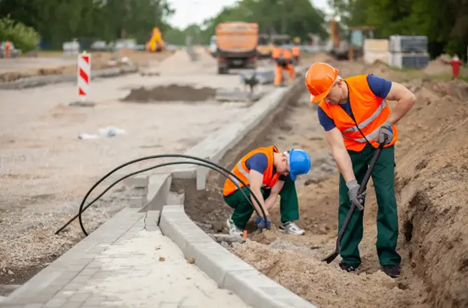The American Society of Civil Engineers gave the nation its highest grades to date for transportation, roadways, and wastewater management, among others.

U.S. Infrastructure Trends Upward in ASCE’s Latest Report Card
U.S. Infrastructure Trends Upward in ASCE’s Latest Report Card
The 2025 Report Card for America’s Infrastructure, issued by the American Society of Civil Engineers (ASCE), reflects the most significant infrastructure improvements in U.S. history, attributed largely to funding from the 2021 Infrastructure Investment and Jobs Act (IIJA). The nation’s overall infrastructure grade increased to “C”, marking notable advancements across multiple sectors. For the first time since ASCE began its report card in 1998, no category was rated “D minus” or lower.
“For more than two decades, the message behind the unflattering grades was consistent: federal, state, and local governments, in addition to the private sector, have not been prioritizing our interdependent infrastructure systems,” ASCE states in the 2025 report card’s executive summary. “In sum, the bill on our infrastructure systems was past due. We needed to reverse the nation’s growing infrastructure investment gap to remain competitive in the global marketplace, allow local businesses to thrive, and keep our families safely connected.”
Impact of the IIJA
Signed into law on November 15, 2021, the Bipartisan Infrastructure Law (BIL) allocated billions to infrastructure projects spanning transportation, water systems, energy, and waste management.
“The law included many of the solutions to raise the grades featured in ASCE’s 2021 Report Card, including robust resources for water infrastructure, transportation, and related areas,” ASCE wrote. “A few years later, IIJA investments and policy changes are already improving the performance of our transportation, water, energy, and waste networks.”
ASCE Grading Scale
Infrastructure grades range from “A” (Exceptional, fit for the future) to “F” (Failing, critical, unfit for purpose), based on condition, safety, reliability, and resilience.
- A: Generally excellent condition, modernized, resilient, and meets future capacity needs.
- B: Good condition, but some elements require maintenance. Minimal capacity concerns.
- C: Mediocre condition, showing deterioration and requiring attention.
- D: Poor, aging infrastructure with significant risk of failure.
- F: Critical, widespread deterioration. Components show imminent failure.
Key Findings from the 2025 Report Card
Categories with Improved Grades
Eight of the 18 sectors evaluated saw upgrades:
- Dams: D → D+
- Hazardous Waste: D+ → C
- Inland Waterways: D+ → C-
- Levees: D → D+
- Ports: B- → B
- Public Parks: D+ → C-
- Roads: D → D+
- Transit: D- → D
“This improvement was possible due to the government and private sector prioritizing investments in systems that historically had received little attention,” ASCE states.
Ports received the highest grade (B) and have shown consistent improvement since their introduction to the report in 2013.
Categories with Declining Grades
Two sectors saw downgrades, reflecting capacity concerns and safety risks:
- Energy: C- → D+
- Rail: B → B-
Broadband Added as a Graded Category
Broadband debuted in 2025, earning a grade of C+. ASCE cited accessibility issues despite $2.2 trillion in private-sector investments and $65 billion from the IIJA.
“Estimates show that 10% of households (12.7 million) do not have a broadband subscription, whether at home or on a mobile device,” ASCE reports. “Extreme weather poses challenges to internet reliability, and new technologies create a rapidly changing environment.”
Challenges Ahead
ASCE warns that despite significant improvements, a substantial investment gap remains.
“The shortfall grows as existing infrastructure systems continue to age and demands on those systems increase,” ASCE states. “Projects should be modernized or replaced by prioritizing resilience to withstand extreme weather. Resilience-focused measures may add to upfront costs but save on sudden, less predictable, and large financial impacts from disaster-related damages.”
Supporting Infrastructure Improvement Projects
GPRS provides essential services for reality capture, damage prevention, and construction & facilities project management to support infrastructure improvement efforts.
Utilizing cutting-edge ground penetrating radar (GPR) scanners, electromagnetic (EM) locators, 3D laser scanners, and remote-controlled video pipe inspection crawlers, GPRS ensures infrastructure integrity and prevents damage during excavation.
Through our Mapping & Modeling Team, field-verified, high-accuracy data is available for planning, operations, and maintenance needs.
All project data is accessible via SiteMap® (patent pending), a real-time project & facility management tool that helps contractors, engineers, and decision-makers maintain accurate existing conditions documentation—ensuring safety, efficiency, and regulatory compliance.
What can we help you visualize?
